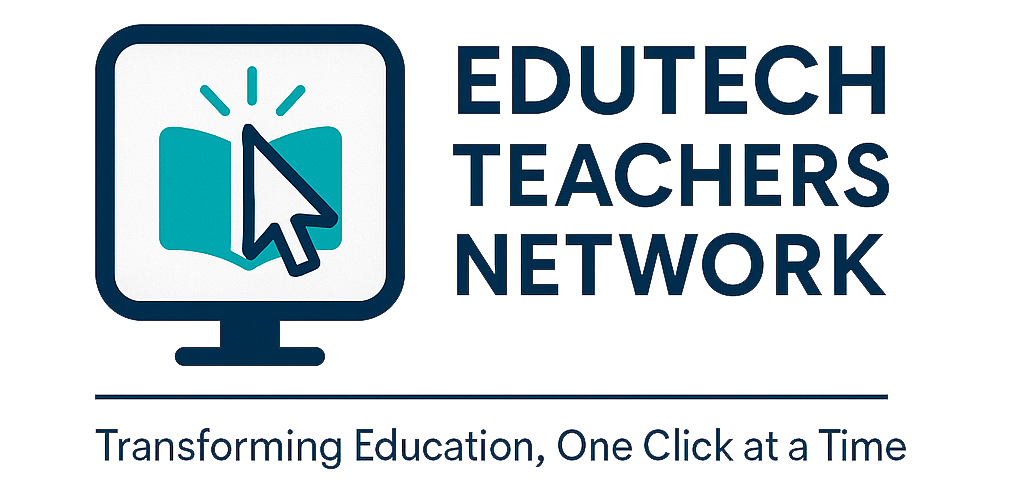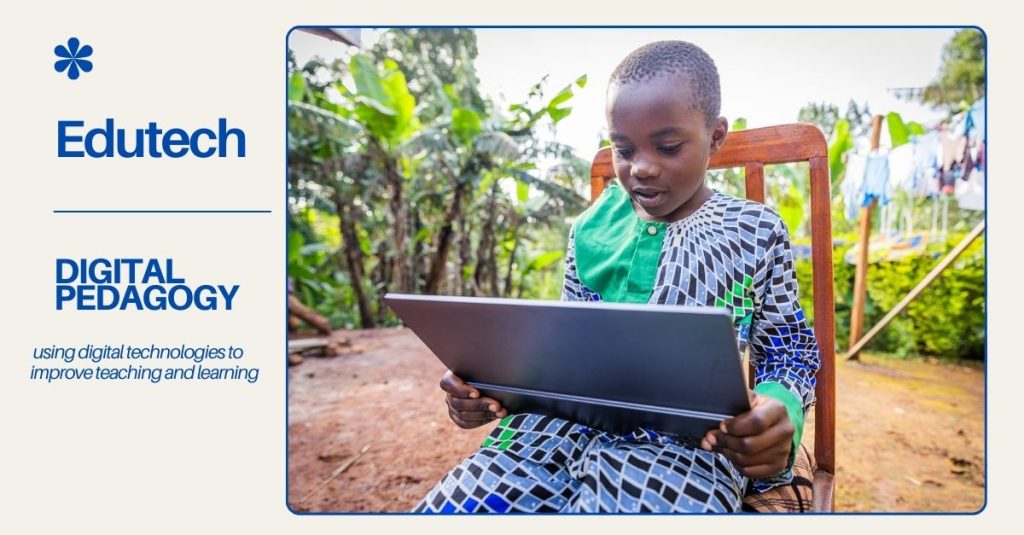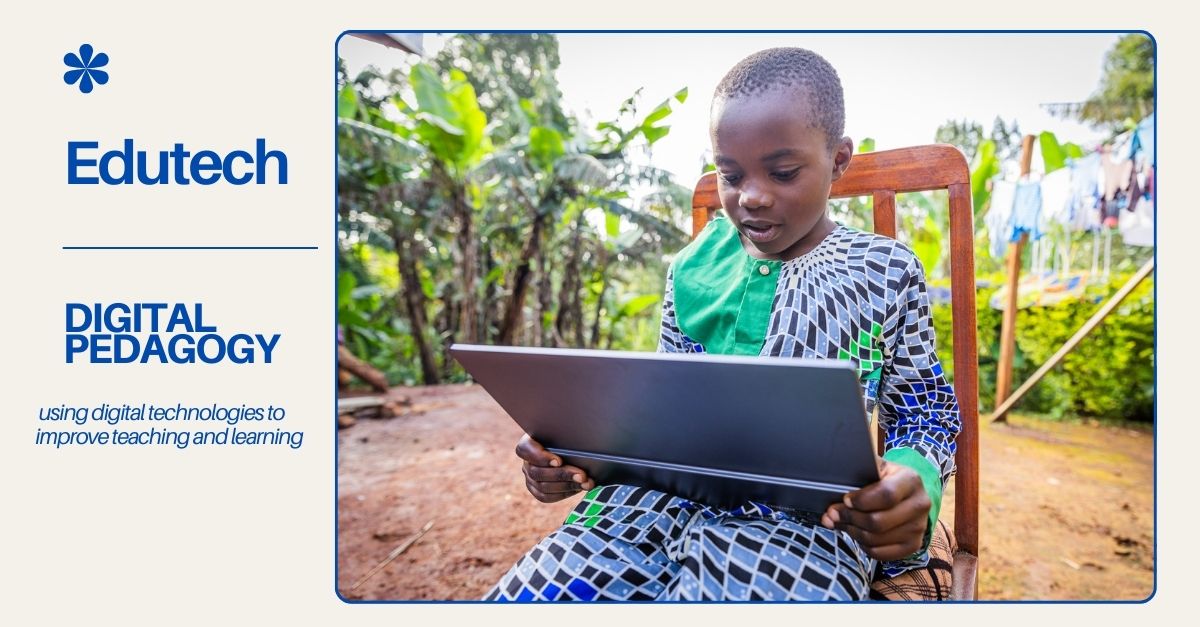Key Points
- Research suggests that digital pedagogy involves thoughtfully integrating digital tools, methods, and strategies into teaching to enhance learning outcomes, focusing on effective design, delivery, and assessment.
- It seems likely that adopting digital pedagogy in Uganda can prepare students for the digital age by encouraging active, personalized learning and promoting innovation, though challenges like limited infrastructure may require adaptive approaches.
- Evidence leans toward using frameworks like TPACK (balancing technology, pedagogy, and content), SAMR (levels of tech integration from substitution to redefinition), and Bloom’s Digital Taxonomy (adapting cognitive skills to digital tools) to guide implementation, acknowledging diverse stakeholder perspectives on accessibility in African contexts.
- While some views highlight potential inequities, digital pedagogy fosters inclusivity, such as through tools for special needs education, but success depends on addressing barriers like connectivity and teacher training in Uganda.
What is Digital Pedagogy?
Digital pedagogy is the study and practice of using digital technologies to improve teaching and learning. In Uganda, it aligns with the national ICT Policy (2014) and Education Digital Agenda Strategy (2021-2025), which emphasize integrating ICT for inclusive education. For example, it might involve using mobile apps for interactive lessons in rural schools.
Why It Matters for Ugandan Teachers
It addresses local needs, like bridging urban-rural divides, by enabling personalized learning. Programs like UNICEF’s digital initiatives in Adjumani show how it increases access for girls and refugees. However, challenges such as unreliable internet require balanced strategies.
Getting Started
Begin with free tools like Google Classroom or Kolibri for offline access. Join networks like EduTech Teachers Network for training. Start small: Substitute paper quizzes with digital ones, then augment with multimedia. The Ministry of Education Digital Agenda provides the outlines of the digital agenda.
Imagine you’re a teacher like Akello Jesca in a bustling Kampala secondary school, where crowded classrooms and limited resources make engaging every student a daily challenge. Or perhaps you’re Moses, teaching in a rural district in northern Uganda, where electricity flickers and internet access is a luxury. In both cases, you’ve heard whispers about “digital pedagogy” – a term that sounds modern and perhaps intimidating, but one that promises to transform how you connect with your learners. As members of the EduTech Teachers Network, we’re here to demystify it for you. This guide, drawing from the foundational Sharebility EduTech Course (particularly Module 2 on Digital Pedagogy & eLearning), explores what digital pedagogy means in the Ugandan and broader African context. We’ll break it down step by step, with local examples, practical tips, and frameworks to help you integrate technology thoughtfully – even in resource-constrained environments.
Understanding Digital Pedagogy: The Basics
At its core, digital pedagogy is the integration of digital tools, methods, and strategies into teaching to enhance learning outcomes. It’s not just about using gadgets; it’s about how technology can be leveraged effectively in designing, delivering, and assessing education. In Uganda, this resonates deeply with the government’s push for ICT integration, as outlined in the National ICT Policy (2014) and the Education Digital Agenda Strategy (2021-2025), which aim to equip schools with digital tools for inclusive, competency-based learning.
Think of teacher Akello Jesca again: Instead of lecturing from a chalkboard, she uses a smartphone to project interactive videos on Ugandan history via YouTube, allowing students to discuss in real-time through a WhatsApp group. This shifts from passive rote learning to active engagement, aligning with Uganda’s competency-based curriculum reforms. In Africa at large, where over 60% of the population is under 25, digital pedagogy prepares youth for a digital economy, but it must account for diverse realities – from urban hubs like Kampala to remote areas with limited connectivity.
Why does this matter? Traditional pedagogy often struggles with large class sizes and varying learner needs. Digital pedagogy encourages active and personalized learning, promotes innovation, and fosters collaboration – essential for 21st-century skills. For instance, in Ugandan schools like those supported by Promoting Education in African Schools (PEAS), EduTech tools have helped girls in rural areas access tailored content, reducing dropout rates.
The Importance of Digital Pedagogy in Uganda
In Uganda, the Ministry of Education’s ICT initiatives, including the Uganda Communications Commission‘s program to provide digital skills, highlight the urgency. Yet, challenges abound: Only about 28% of Africans have reliable internet, and Sub-Saharan Africa faces a shortage of 15 million teachers. Digital pedagogy offers solutions by making education more accessible and efficient. For example, during the COVID-19 lockdowns, Ugandan teachers turned to radio and TV broadcasts, but those embracing tools like Google Classroom saw better student retention.
On a continental scale, EduTech addresses inequities: Initiatives like Asante Africa’s digital literacy programs in Uganda empower youth with skills for employment. However, it’s not without controversy – some argue it widens divides if not implemented inclusively, emphasizing the need for policies that support infrastructure and training. In the EduTech Teachers Network, we advocate for balanced views, ensuring technology serves all learners, including those with special needs, as per Module 2.5 of the Sharebility course.
Key Frameworks for Digital Pedagogy
To make digital pedagogy actionable, several models guide teachers. These are central to the Sharebility EduTech Course’s Module 2.
Bloom’s Digital Taxonomy: An update to Benjamin Bloom’s classic hierarchy, it adapts cognitive skills to digital tools. From lower-order thinking (remembering via bookmarking) to higher-order (creating via blogging), it helps plan tech-enhanced lessons.
| Level | Description | Digital Examples in Uganda |
|---|---|---|
| Remembering | Recall facts | Searching online for Ugandan geography facts using Google. |
| Understanding | Explain concepts | Tagging notes in a shared Google Doc on local history. |
| Applying | Use information | Uploading charts in Excel for math projects. |
| Analyzing | Break down ideas | Mind-mapping Ugandan ecosystems with tools like Canva. |
| Evaluating | Judge value | Posting critiques on a class blog about environmental policies. |
| Creating | Produce new work | Filming and editing videos on sustainable farming using mobile apps. |
This model ensures progression, as seen in Ugandan ICT clubs where students create digital content for exhibitions.
TPACK Model: Technological Pedagogical Content Knowledge balances three areas: Content (subject expertise), Pedagogy (teaching methods), and Technology (tools). Effective teaching occurs at their intersection. For Moses in rural Uganda, this might mean using offline apps like Kolibri to teach science, combining local content with interactive pedagogy.
| Component | Focus | Ugandan Application |
|---|---|---|
| Content Knowledge (CK) | Subject matter | Knowing Ugandan curriculum on agriculture. |
| Pedagogical Knowledge (PK) | Teaching strategies | Using group discussions for learner-centered approaches. |
| Technological Knowledge (TK) | Tech tools | Mastering Google Workspace for Education. |
| TPACK Intersection | Integrated use | Creating virtual farm simulations for hands-on learning in low-resource schools. |
SAMR Model: Developed by Dr. Ruben Puentedura, it categorizes tech integration into four levels: Substitution (tech replaces traditional tools), Augmentation (adds functionality), Modification (redesigns tasks), and Redefinition (creates new tasks). In Ugandan contexts, start at substitution (e.g., typing notes in Word) and aim for redefinition (e.g., global collaborations via Zoom).
| Level | Description | Example in African Schools |
|---|---|---|
| Substitution | Tech as direct replacement | Typing essays on a laptop instead of handwriting. |
| Augmentation | Functional improvement | Using spell-check in Google Docs for English lessons. |
| Modification | Task redesign | Collaborative editing of group projects online. |
| Redefinition | New tasks possible only with tech | Virtual field trips to Ugandan national parks via VR apps. |
These models, featured in the EduTech course slides, help avoid superficial tech use.
Practical Examples and Personas in the Ugandan Context
Teacher Akello Jesca: In her Kampala classroom, she applies TPACK by using Google Forms for quizzes for example (content + pedagogy + tech), fostering discussion on Ugandan governance. In the wider rural settings of Uganda, Moses uses solar-powered tablets with pre-loaded Kolibri content for offline science simulations, addressing connectivity issues.
Broader examples include Enabel’s use of podcasts and Google Classroom in Ugandan schools to track learning, or UNICEF’s digital platforms in Adjumani for refugee education. For special needs, tools like AI-based read-aloud features ensure inclusivity, as per the course’s SNE focus.
Challenges and Solutions in Africa
EduTech in Africa faces hurdles: Insufficient infrastructure (e.g., power outages), teacher training gaps, and funding shortages. In Uganda, uneven adoption in higher education stems from policy absences. Solutions include offline tools, partnerships (e.g., Airtel Africa for connectivity), and networks like ours for peer support. The EduTech course emphasizes sustainable policies, like BYOD guidelines.
Getting Started: Tips for Ugandan Teachers
- Assess Your Readiness: Start with basic ICT skills from Module 1 of the EduTech course.
- Choose Tools Wisely: Use free options like Canva for visuals or Moodle for LMS.
- Plan Inclusively: Incorporate SNE tools, as in Module 2.5.
- Join Communities: Leverage the EduTech Teachers Network for webinars and mentorship.
- Evaluate Impact: Use SAMR to progress from basic to transformative integration.
In conclusion, digital pedagogy isn’t a distant concept – it’s a tool for empowerment in Uganda’s classrooms. As the slogan goes, “Transforming Education, One Click at a Time.” Embrace it, and watch your learners thrive. For more, explore edutechteachers.net



Leave a Reply